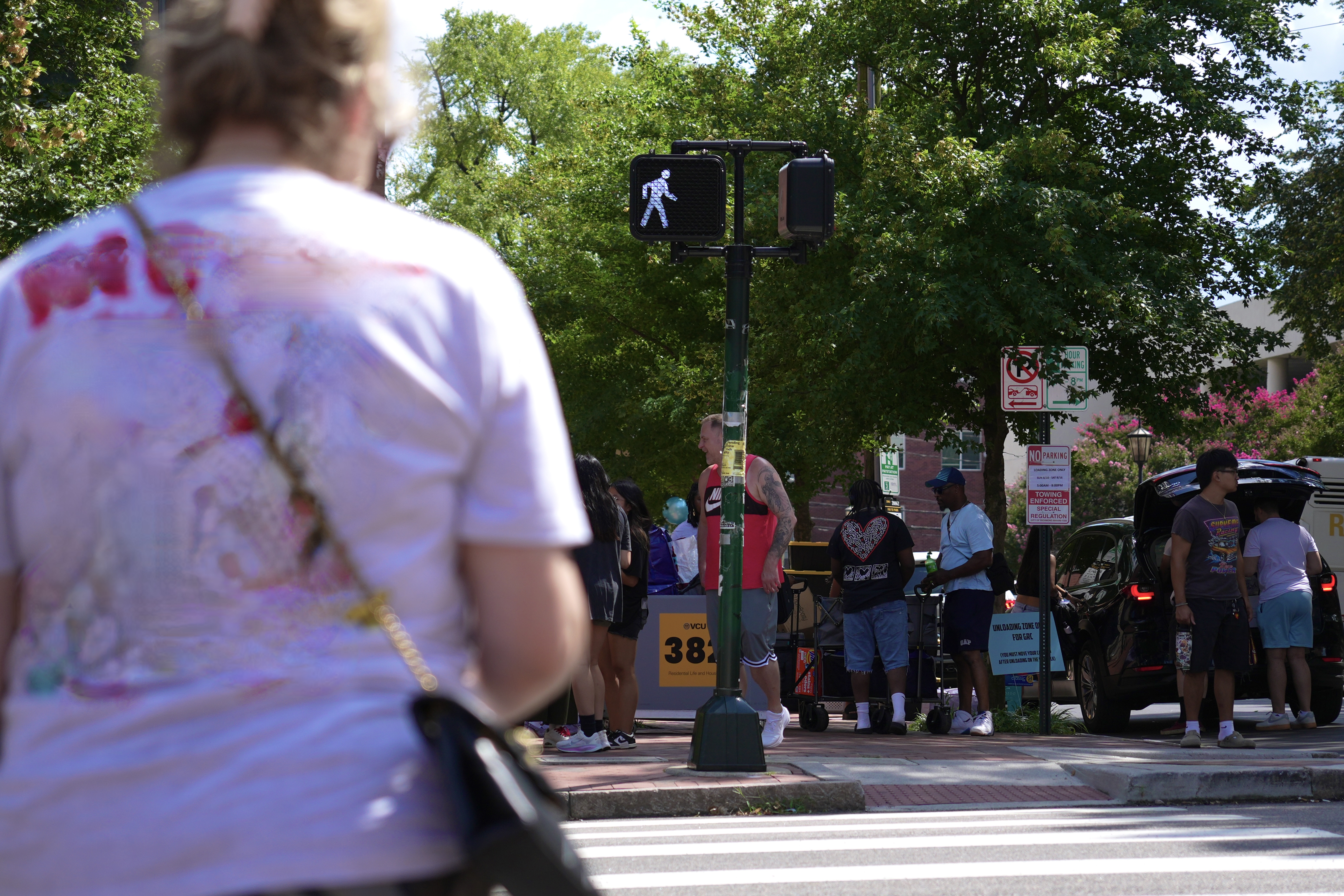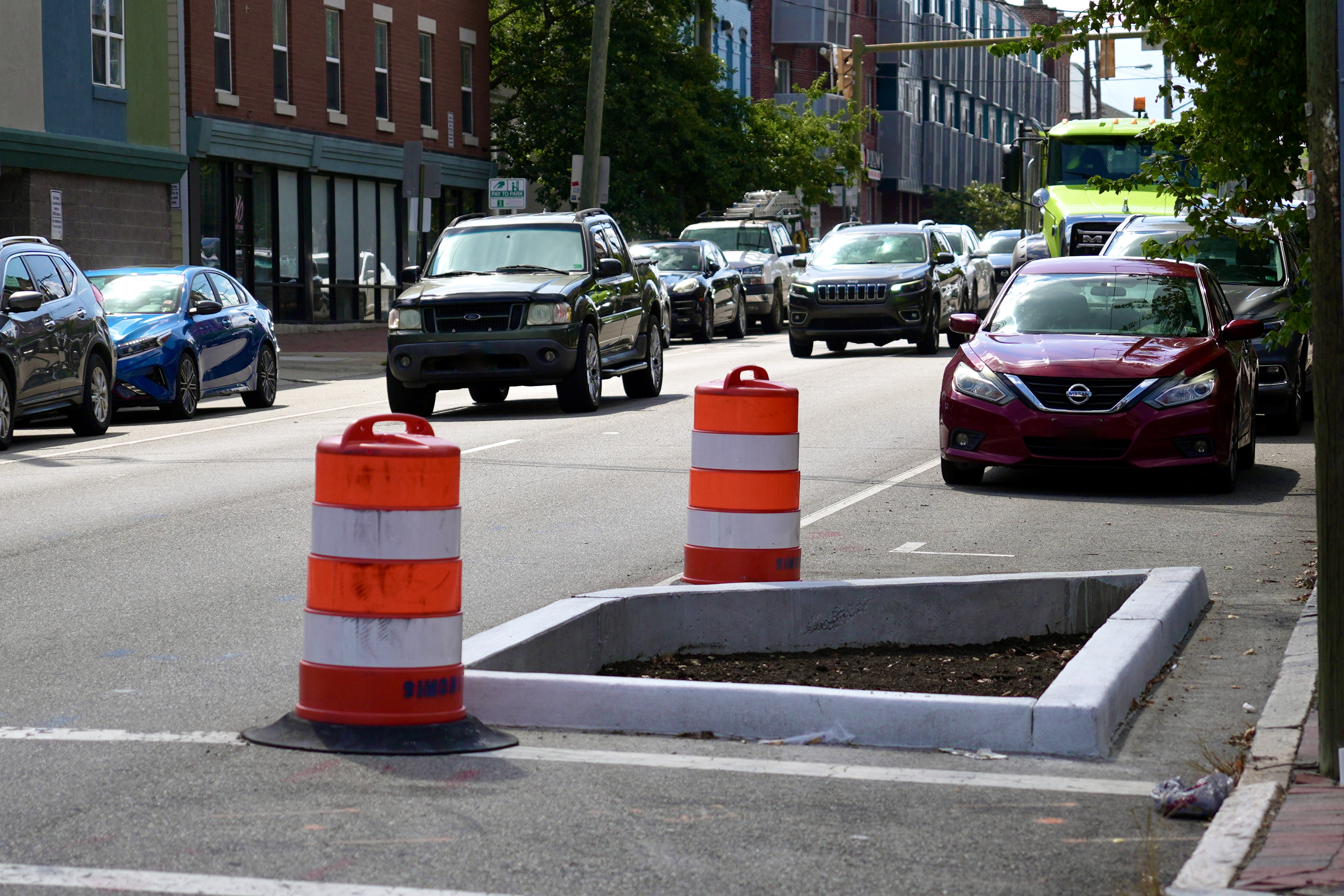Pedestrian Safety
By their very nature and setting, VCU and VCU Health facilities experience high volumes of pedestrian and vehicular traffic day and night, year-round. This requires all travelers – including pedestrians – to move along roadways without distraction. Please keep the safety of yourself and others top of mind.
VCU Police strongly recommends pedestrians utilize crosswalks, crossing signals and traffic devices whenever crossing a roadway. Before entering a roadway or intersection, take a moment to analyze your surroundings, and if you have a reason to pause before you begin moving, do not do so until it is safe.
Pedestrians should arm themselves with information and focus whenever walking through the city.
- Before and while crossing, keep your head on a swivel and always be aware of your surroundings.
- Cross at painted crosswalks instead of crossing streets mid-block; cross when you have the “walk” light at traffic signals. If you do not have the “walk light”, stay on the sidewalk and do not stand in the roadway.
- Approach crosswalks and intersections assuming drivers won’t do the right thing, and then let them prove you wrong.
- If you can, make eye contact with drivers as they approach the intersection.
- Your senses are a tool – take off headphones and keep your head up.
- If you can, make eye contact with drivers as they approach the intersection.
- Consider wearing bright/reflective clothing at night or carrying a flashlight; you can use the light on your cell phone to make yourself more visible.
Pedestrian Responsibilities
Smart pedestrian behaviors make a significant difference in personal safety. Getting to and from VCU’s campuses requires crossing roadways with high levels of vehicular volume, particularly during daily commuting hours, nights and weekends.
While VCU Police are ready to enforce traffic violations by drivers, the best safety tool is following pedestrian behavior guidelines laid out in Virginia law:
- Cross at intersections or marked crosswalks whenever possible.
- If an intersection does not contain a marked crosswalk, use the most direct route to cross the roadway.
- Do not enter a roadway from a place where moving vehicles cannot see you.
- Always walk on sidewalks. The vast majority of roadways around VCU and VCU facilities are equipped with sidewalks; however, if that is not the case, walk on the extreme left side of the roadway.
Pedestrians should always pay close attention to oncoming traffic. Do not enter the roadway until you are absolutely sure you have time to fully cross a street before a vehicle gets close to you.
Head Up, Rams! Stay safe on your UNcommon path
In an effort to keep pedestrian safety top of mind for every VCU and Richmond community member who travels through campus, VCU has launched the “Heads Up, Rams!” pedestrians safety education initiative. Weekly, targeted social media content will relay important safety information and infrastructure developments aimed at keeping the VCU and Richmond community safe.
Make sure to follow the VCU Police, VCU Parking & Transportation and other VCU social media accounts to learn more!
Pedestrian Infrastructure Improvements
Both VCU and the city of Richmond remain committed to improving pedestrian infrastructure along the city-owned right-of-way through both the Monroe Park and MCV campuses. In 2023, VCU President Michael Rao, Ph.D., commissioned an independent study to identify and prioritize pedestrian safety improvements.
University and city officials continue to regularly meet to brainstorm and develop safety projects – from both a planning and financial perspective.
Several of the recommendations made by Kimly-Horn – the engineering, planning and design firm that conducted the 2023 traffic study – have already made a tangible impact on driver behavior near campus.
- Installation of multiple “front doors” on both campuses as visual reminders they are entering an area with high pedestrian volume.
- Installation of 15 speed tables across both campuses.
- 14 “No Turn on Red” signs near the Monroe Park campus.
- Leading pedestrian intervals at intersections.
- Curb extensions at dozens of intersections both VCU campuses.
- Turn hardening at four intersections (planning/development).
- Speed feedback signs (planning/development)
- Mid-block pedestrian crossing signs on Cary and Main Streets near Snead Hall.
For updated information on completed and future pedestrian safety improvements, visit the ONE VCU Master Plan site.
VCU RAMSWay
RAMSWay routes connect key locations on VCU’s campuses, such as academic buildings, gyms, libraries, medical buildings, residence halls, GRTC and VCU shuttle bus stops and parking decks.
RAMSWay paths are marked with aluminum signs attached to structures along the routes. These paths are intended to supplement personal safety habits by bringing community members together onto a common route to assist in maintaining a safe environment.
Routes on each campus were selected based on community feedback to provide access to many key buildings and locations on each campus. Special attention was paid to discern paths with adequate lighting, existing emergency phones, low landscaping, high pedestrian traffic and video surveillance.
When traveling on a RAMSWay path, members of the VCU community will have more opportunities to speak with VCU Police officers.
Think of RAMSWay as an interstate. Walk or ride through campus along RAMSWay when possible. When not on RAMSWay, make use of other available safety measures including the LiveSafe app, walking with a peer, ERTs phones, RamSafe and carrying pepper spray.
MCV Campus: RAMSWay Path
- 12th Street from Broad Street to Marshall Street
- Marshall Street from 12th Street to 11th Street
- 11th Street from Marshall Street to Leigh Street
- Leigh Street from 11th Street to 10th Street
- Through the College of Health Professions pedestrian thoroughfare, crossing Turpin Street, to Larrick Student Center
- Larrick Student Center to the 8th Street Parking Deck
Monroe Park Campus: RAMSWay Path
- Shafer Street from Broad Street to Franklin Street
- Shafer Street (pedestrian thoroughfare) from Franklin Street through the Compass, to Floyd Avenue
- Floyd Avenue from the Commons crosswalk to Linden Street
- Linden Street (pedestrian thoroughfare) from Floyd Avenue to Main Street
- Linden Street (pedestrian thoroughfare) from Main Street to Cary Street
Security camera monitoring on the RAMSWay path is passive, not active. Cameras and VCU Police will not be able to detect emergencies on the path as they occur. Further, police cannot guarantee constant monitoring of the RAMSWay route. If there is an emergency on the RAMSWay path, call VCU Police at (804) 828-1234. Pedestrians can also call VCU Police by using ERTs phones along the route or by using the LiveSafe app.
We Want to Hear from VCU
Anyone with concerns about pedestrian safety issues should contact the VCU Police department at policedept@vcu.edu, subject line, “Pedestrian Safety.” Please include a detailed description of the issues, the block number and contact information.
VCU Police’s Traffic Division will review each submission, and bring concerns to the
appropriate parties, when deemed appropriate.

